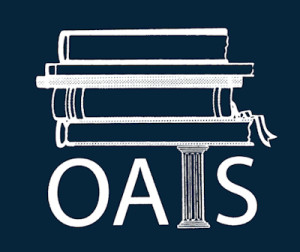In the last several days, there has been a great deal of discussion on Twitter and on the blogosphere regarding the use of standardized tests in private schools, both for students on vouchers and the student population at large, depending on the number of students receiving vouchers in the school. The Fordham Institute kicked things off with its Public Accountability and Private-School Choice Toolkit and since then, many have weighed in to agree or disagree, including Jason Bedrick of the Cato Institute, Michael Petrilli of the Fordham Institute, Robert Enlow of the Friedman Foundation, Matt Ladner on Jay Greene’s blog and Rick Hess on the Education Week blog, among others.
I feel private schools in Ohio might be a little more sensitive about this topic than most, given our history. In 1995, Ohio became the first, and to this point still the only, state to require all students in chartered nonpublic schools to pass a state-mandated standardized test in order to receive a high school diploma. Initially passed six years earlier, the 9th Grade Proficiency Test was not originally intended for nonpublic students but was extended to them years later in exchange for other considerations requested by nonpublic organizations other than OAIS. For independent schools, this is significant because Ohio is the only state to require secular schools to be directly chartered by the state in order to hold themselves out as schools, leaving no other option for existence. This means that, unlike religious schools that have an objection to state oversight, all secular independent schools must be chartered by the state or they cannot exist.
While Ohio has a strong history of oversight over private schools, it also has a strong history of directing public funds to the operations of private schools. Since the late 1960’s, Ohio has provided pupil transportation to students attending private schools; since the mid 1970’s, Ohio has provided auxiliary funds for the purchase or leasing of secular materials or services for use in private schools; since the 1980’s, private schools have received administrative cost reimbursement for the paperwork and other effort necessary to comply with state mandates; and since the 1990’s, Ohio has had one of the most generous voucher programs of any state.
It is in this context that independent schools in Ohio look at the proposals for so-called accountability through standardized tests with skepticism. Ohio does not have a strong history of rolling back regulation for the benefit of private education; instead, the rules and regulations that independent schools must follow seem only to creep up in numbers. The result of this regulatory creep has been to make some private schools look more and more like public schools, to the point where it seems the only difference between some is the requirement to pay tuition. While some might look at the funding that our schools receive that private schools in other states do not, it is also important to point out that schools cannot opt-out of the regulations if they opt-out of the funding, meaning there is no appreciable relationship (other than with the administrative cost reimbursement) between the regulations and testing we must endure and the funding we receive.
OAIS schools, especially those with high school grades, operate with a simple accountability structure. The schools are accountable to the student, to the parents and to higher education. Students at OAIS schools expect to be well-prepared to receive a college education (and the Ohio Board of Regents
information proves they are), their parents also expect them to be well-prepared, and colleges expect them to be well-prepared. The accountability in this situation is pretty basic: If colleges determine the students coming from an OAIS school aren’t typically prepared for college, they will stop admitting the students. Parents will not want to pay tuition for a student to attend a school where they will not be prepared to go to college, and students won’t want to attend a school where they have a difficult time gaining admission to the college of their choice. There is nothing government can do to improve upon the accountability of schools in this case. No PARCC exams or set of graduation requirements can affect the accountability of a school better than parents simply refusing to pay the tuition to send their children to a school that is demonstrably not living up to its end of the deal.
So what accountability does a state-mandate series of exams provide to those who attend and support independent schools? Not much. If parents demand that this kind of testing regimen be implemented for their child, one of two things will happen: the school will do it or the parent will be encouraged to send their child to a school that does use them. If colleges and universities start to demand these tests be used, one of two things will happen: either the schools will administer them or the graduates of schools that don’t use the tests won’t get into the colleges they want to attend.
It is undeniable that the main reason OAIS schools do not participate in voucher programs is because of the amount of regulation (testing) that goes along with that participation (Just ask a head of school and they’ll tell you!). If the concept of accountability it to make sure that schools are holding up their end of the bargain, the market-based accountability described above is going to do more for everyone that a standardized test will.
If voucher and tax credit advocates want these schools to participate, instead of advocating for more testing that is not being demanded by parents or colleges, they should work with schools to find out what can satisfy the state’s need for accountability while not impeding the mission of or wasting the time of school administrators, teachers and parents.
Dan
